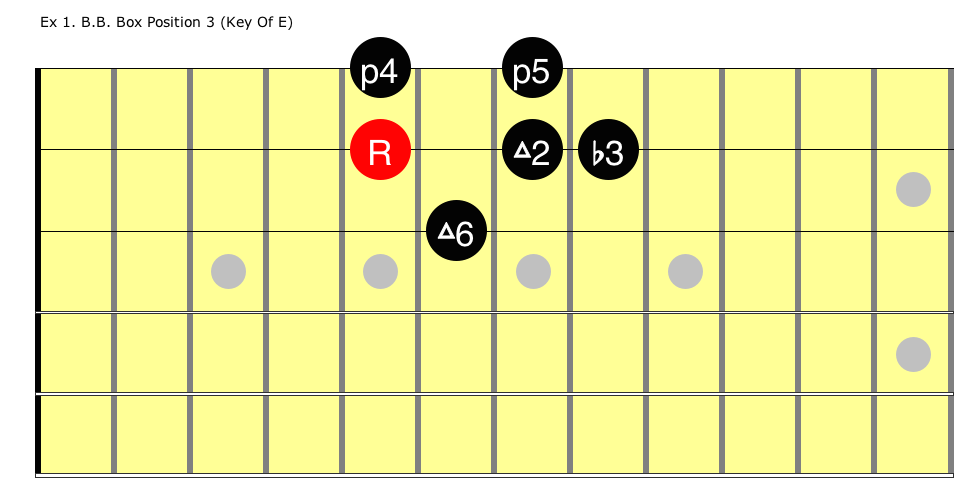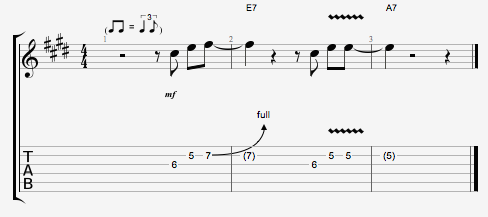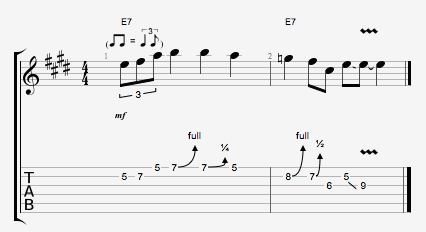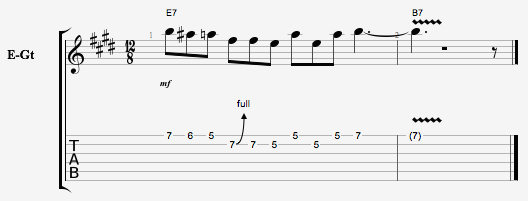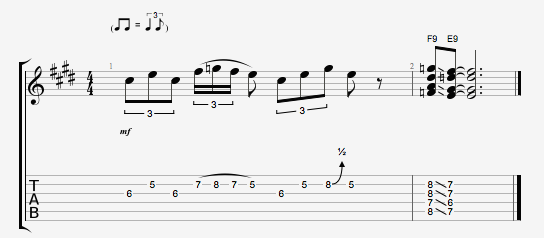
Blog
Jul 21 2015 |
B.B BoxBy: Scott Gilliam Posted in: Blues Guitar Lessons You know you have arrived as a guitarist when you have your own scale pattern named after you. Much like the “Hendrix Chord” a.k.a. E7#9 or the “Bo Diddley Beat”, blues guitar ambassador B.B. King has a scale fingering that many players associate with him. It’s a testament to B.B.’s wonderful approach,touch, sound, and unique conception that makes him one of the most imitated and admired bluesmen of all time. It’s easy for guitarists to analyze and cop things from players that have come before us. It is quite another to have carved out your own voice on the instrument and be instantly identifiable with one note! The “B.B. Box” as it’s known, is derived from the minor pentatonic scale, with the addition of a 9th and the b7 replaced by a 6th. Another way to think of it, could be a Dorian scale without the b7. It is often mentioned that this scale gives access to the “sweet notes”. What defines the sweet notes may vary from player to player but I think an understanding of how to target chord tones gives you the most value in regard to particular patterns or fingerings. For the purpose of the lesson, I am going to relate the “B.B. Box” to the minor pentatonic, due to it’s familiarity to most players.
Ex.1 Illustrates the “B.B. Box” in the key of E and it is written in the 3rd pos of the Em pentatonic scale. I have notated this on the top three stgs only, but I do recommend learning where all the notes are in all the 5 pos of the min pent scale. The notes in order from the root are E,F#,G,A,B,C#. That gives us 1,2,b3,4,5,6. The attraction of this fingering to many players is the comfort in which the notes fall under the fingers. This is to facilitate phrasing and also ease of bending because you can reinforce your third finger with the first and second finger.
Ex.2 Is a B.B. inspired lick to use as an intro to an uptempo blues in E. It starts off with a pickup and the bend targets the the G# which is the 3rd of the I chord (E7). Even though the maj 3rd G# isn’t in the scale, we are using the fingering that allows us to bend to it and thus getting the “sweet note”. Mixing the maj and min 3rd is done my countless blues players and B.B. King is a master of this. The next lick starts off on the A# which anticipates the 3rd of the IV chord (A7) which occurs in the second measure. Use some quick vibrato on the last note to mimic B.B.’s “butterfly” vibrato!
Ex. 3 Is another lick in E that illustrates the importance of bending for good blues phrasing. I am using a microtonal bend in this example which is a 1/4 step bend. Using quarter step bends gives you feel and “grease” to your lines. I find when it comes to practicing bends it’s useful at first to avoid vibrato which can mask the accuracy of your bending. Also helpful is fretting the note you are bending to and then match it with your bend to see if your up to pitch.
Ex.4 Is a Robben Ford inspired lick over a 12/8 blues. This can be played on the 8th measure of a blues in E because our line will resolve to the B. I have added the b5 to the opening phrase and it falls nicely under the fingers in the “B.B. Box’ on the 1st stg. Note the use of triplets in this phrase – a cornerstone of blues and jazz phrasing.
Ex 5. What is a more fitting way to end our lesson then with an outro lick in E? This lick would be played on the eleventh measure of a 12 bar blues and it starts with the 6th (C#) and goes into quick hammer on/pull off triplet lick. There is a half step bend to the maj 3rd (G#) which is then followed by a classic F9 to E9 resolution.
The “B.B. Box” is just a spot on the guitar neck that allows you to access some notes. Listen to the great B.B. King and all the wonderful players he has influenced to really hear what’s important about electric blues guitar. We are all drawing from the same well, but to stand out you need more than the correct notes over a chord. Taste, tone, feel, and a deep connection to the music you are playing is what’s required to develop your own sound on the guitar. The journey is what it’s all about and who better to help guide us then Riley B. King.
|




